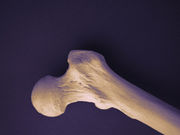Model shows this combo starting at age 55 in postmenopausal women prevents fractures
FRIDAY, Oct. 27, 2017 (HealthDay News) — Combined assessment of bone strength and bone mineral density is a cost-effective strategy for osteoporosis screening in postmenopausal women, according to a study published in the November issue of Radiology.
Christoph A. Agten, M.D., from the NYU Langone Medical Center in New York City, and colleagues created a model to investigate whether assessment of bone strength with quantitative computed tomography (CT) in combination with dual-energy x-ray absorptiometry (DXA) is cost-effective as a screening tool for osteoporosis in postmenopausal women (≥55 years).
The researchers found that the most cost-effective strategy was combined DXA and quantitative CT screening starting at age 55 with quantitative CT screening every five years (incremental cost-effectiveness ratio, $2,000 per quality-adjusted life year). With this strategy, 12.8 percent of postmenopausal women sustained hip fractures in their remaining life versus 18.7 percent with no screening and 15.8 percent with DXA screening. Vertebral fractures would happen in 7.5, 11.1, and 9 percent, respectively, while wrist fractures were predicted in 14, 17.8, and 16.4 percent, respectively. DXA and quantitative CT at age 55 years with quantitative CT screening every five years was the best strategy in more than 90 percent of the 1,000 simulations.
“Combined assessment of bone strength and bone mineral density is a cost-effective strategy for osteoporosis screening in postmenopausal women and has the potential to prevent a substantial number of fragility fractures,” the authors write.
Copyright © 2017 HealthDay. All rights reserved.








